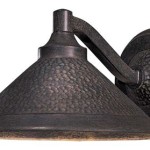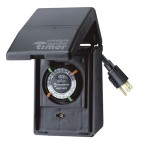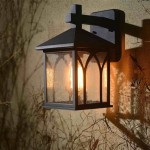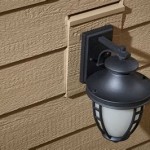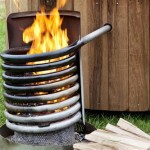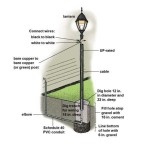Essential Aspects of LED Lamps for Outdoor Use
LED (Light-Emitting Diodes) lamps have revolutionized outdoor lighting, offering numerous advantages over traditional lighting sources. To ensure optimal performance and durability, consider the following essential aspects when selecting LED lamps for outdoor use:
1. Ingress Protection (IP) Rating
The IP rating indicates the lamp's resistance to dust and moisture ingress. For outdoor use, lamps with an IP rating of at least IP65 are recommended. This ensures protection against water jets and dust, ensuring longevity and reliability.
2. Lumen Output
Lumen output measures the amount of visible light emitted by the lamp. Determine the required lumen output based on the desired illumination level and area to be lit. Higher lumen output provides brighter illumination, while lower lumen output is suitable for ambient lighting.
3. Color Temperature
Color temperature, measured in Kelvins (K), determines the color appearance of the emitted light. Choose a color temperature that complements the ambiance and surroundings. Warm white (2700-3000K) is suitable for residential areas, while cool white (4000-5000K) is preferred for commercial and industrial applications.
4. Beam Angle
The beam angle describes the spread of the light emitted from the lamp. Choose a beam angle that suits the lighting requirements. Narrow beam angles produce a focused beam, while wide beam angles provide more diffused illumination.
5. Material and Durability
LED lamps for outdoor use should be made of durable materials like aluminum or polycarbonate to withstand harsh weather conditions. Ensure the lamps are corrosion-resistant and can withstand extreme temperatures to maintain optimal performance.
6. Dimmability
Dimmable LED lamps offer flexibility in controlling the light output. This allows for adjusting the illumination level to suit different needs, such as creating ambient lighting or task lighting.
7. Energy Efficiency
LED lamps are highly energy-efficient, consuming less power than traditional lighting sources. This translates into significant energy savings and reduced operating costs over time. Choose lamps with a high luminous efficacy, measured in lumens per watt.
8. Lifespan
LED lamps have a long lifespan, typically ranging from 50,000 to 100,000 hours. This reduces the need for frequent replacements and maintenance, minimizing downtime and hassle.
9. Warranty
A reliable warranty assures the quality and durability of the LED lamps. Look for manufacturers offering extended warranties to indicate their confidence in the product's performance.
10. Additional Features
Some LED lamps for outdoor use come with additional features, such as motion sensors, dusk-to-dawn sensors, and remote control capabilities. These features enhance convenience, safety, and energy savings.
By considering these essential aspects, you can select LED lamps for outdoor use that meet your specific requirements and provide optimal performance, durability, and energy efficiency.

Can Led Lights Be Used Outdoors Bpm Electric

Led Lamp For Outdoor Use With Solar Panel Idfdesign

Are Led Bulbs Good For Outdoor Use Blog Lucas

Auto On Off Wireless Patio Path Rail Backyard Lantern Led Ip65 Waterproof Bulb Outdoor Steps Solar Powered Light Decks Lighting Walkway Stair Fences Lamp China Holiday Made In Com

How To Choose The Best Outdoor String Lights

Portable Solar Led Light Bulb Powered Panel Lamp Lighting For Outdoor Hiking Fishing Camping Tent Emergency Use En Coop Lights Com

2x Led Outdoor Standing Lamp Stand Light Path Garden Yard Driveway Porch Lighting Stainless Steel Ip44 H 45cm Etc Lamps Furniture Technology Household All From One Source

Battery Operated Lights Lamps At Light11 Eu

Govee Rgbic Wi Fi Bluetooth Outdoor Led Lights Review The Gadgeteer

1pc Solar Powered Waterproof Split Type Led Light For Home Garden Yard Indoor And Outdoor Use Suitable Camping Rural Roads Pathways Garages Warehouses Farms Breeding Sheds With Double Headed Lamp
